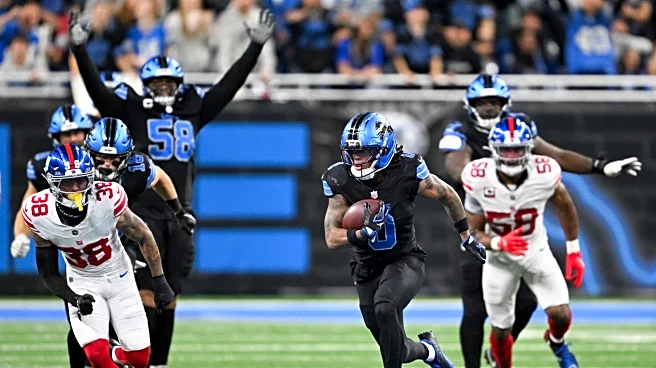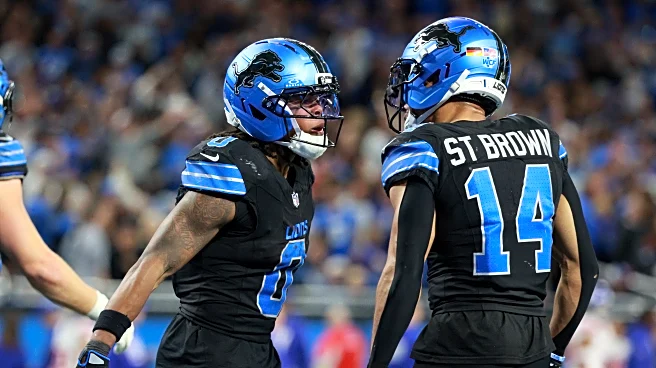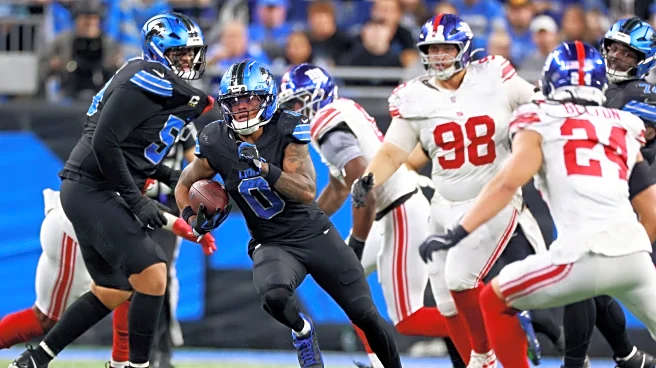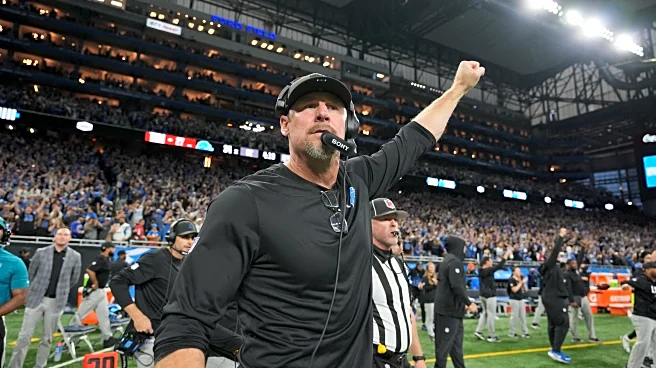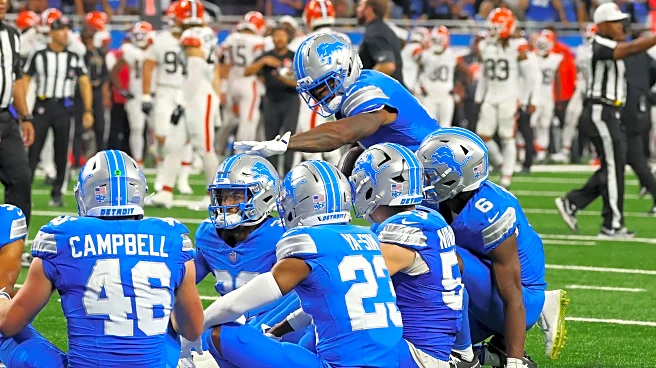Hello, Green Bay Packers fans. My name is Erik Schlitt, and I’m the managing editor at Pride of Detroit, Acme Packing Company’s Lions-based brother site at SB Nation. I’ve been covering the Lions for over a decade
and am in my eighth credentialed season. SB Nation asked APC and POD to each have a writer from enemy territory get rival fans up to date with where their Thanksgiving opponent stands heading into the big game, and I’ve taken on that responsibility.
In this piece, I’ll do my best to walk you through some of the things the Lions do well, areas where they struggle, as well as any notable changes the Lions have undergone since these two teams met in Week 1. Time permitting, I’ll check in on the comments to attempt to answer any questions you may have.
Lions offense
What does the Lions’ offense do well?
- They put up points: Averaging nearly 30 points a game (fourth best in the NFL)
- When they reach the red zone, they find the end zone: 66.67% of the time (fifth best)
- Quick ball distribution + YAC: Lions lead the NFL in yards after the catch
- Use play-action to their advantage: Jared Goff’s EPA per play on PA is 0.45 (third best)
- Keep turnovers to a minimum: +0.5 as a team (seventh best)
Where does the Lions’ offense struggle?
- Have been weak defending pressure up the middle
- When pressure arrives, it comes quickly: under 2.5 seconds (worst in the NFL)
- When pressured, Goff’s EPA drops from 0.13 (eighth best) to -0.43 (31st)
- 3rd down efficiency is poor: Convert on just 36% of attempts (27th)
Injuries of note (starters):
- TE Sam LaPorta is out for the season
- LG Christian Mahogany is on IR
- WR Kalif Raymond was injured last game
One of the most significant changes the Lions have undergone on offense has been the shift in offensive play-calling duties, as coach Dan Campbell has taken over those responsibilities. In Week 1, the Packers faced the Lions’ new offensive coordinator, John Morton, who hadn’t called plays since 2017 and was very slow to adjust to Green Bay’s defensive strengths.
In the three weeks Campbell has been calling the offense, the Lions have scored 44, 34, and 9 points. Translation: It’s still a work in progress, but no one knows these players better than Campbell, and when he finds something that works, he knows how to lean into it.
Goff is one of the most efficient quarterbacks in the NFL, and tends to play even better at home inside Ford Field. Pressure is his Kryptonite, but he manages it much better on turf than on grass. He isn’t afraid to push the ball downfield, but the majority of his time is spent protecting the ball and finding the open receiver—even if that means checkdowns. Previously against the Packers, Goff has been content to run a death-by-a-thousand-cuts offense, simply getting the ball into his skill players’ hands and letting them work.
The Lions have shifted to feature more Jahmyr Gibbs, who has shown he can take over games on his own. Gibbs has been an effective runner inside and outside the tackles, and the Lions will throw the ball to him as well in order to get him in space.
Amon-Ra St. Brown continues to be the feature pass catcher, but the evolution of Jameson Williams’ route tree has helped open up the offense. That said, Williams has had two games in which he was kept off the stat sheet, including last Sunday. With Raymond injured and possibly out for this week, the Lions may need to turn to rookie Isaac TeSlaa for WR3 duties (he caught the Lions’ only touchdown in Week 1).
The loss of LaPorta has been a problem the Lions have not solved. They elevated Brock Wright to the TE1 role and have leaned on 6-foot-10 offensive lineman Dan Skipper to give them some extra blocking power, but the position group is lacking production. And with no real answer at tight end, in games where Jameson Williams disappears, it puts extra stress on St. Brown and Gibbs.
The Lions’ offensive line will be key in this game. They’re working with a replacement left guard, but Kayode Awosika is a veteran and has been in this role for the previous three games, so he’s comfortable. Who wins this battle in the trenches will surely control how many points the Lions will score.
Lions defense
What does the Lions’ defense do well?
- Defensive secondary has only allowed one 300-yard passer this season
- Have evolved from a basic man-coverage scheme to incorporate disguise
- Efficient tacklers: Fewest YAC allowed and fewest rushing yards after contact allowed
- Top 10 in: Pressures (ninth), pressure rate (fifth), sacks (eighth), sack rate (fifth)
- On average, hold teams to roughly 100 yards rushing (10th)
Where does the Lions’ defense struggle?
- While top 10 in getting to the QB, it takes time: Average of 2.9 seconds (31st)
- Against accurate QBs who can defeat man coverage
- Against speedy slot receivers that can beat man coverage
- Third-and-long defense (Third-and-short, they’re in the top five)
Injuries of note (starters):
- DT Alim McNeill has returned: He didn’t play in Week 1
- EDGE Marcus Davenport (in the process of returning from IR)
- CB Terrion Arnold (in concussion protocol, returned to practice this week)
- FS Kerby Joseph (missed the last five games)
The Lions’ defensive line, on paper, can put up stats, but they get there in an unusual way. The Lions operate a front that features Aidan Hutchinson and typically three bigger bodies working together to try to stop the run. The edge rushing role opposite Hutchinson can vary in responsibilities and features players like defensive tackle Alim McNeill, traditional EDGE Al-Quadin Muhammad, or even off-ball linebacker Derrick Barnes. While Hutchinson is tasked with creating pressure down-to-down, the Lions’ second wave of pressure will come from a variety of places, including blitzes.
The Lions also prefer to keep all three of their linebackers on the field as much as possible, as they believe they have three linebackers who can stop the run, rush the passer (even if only on blitzes), and drop into coverage. Add in the times when they drop safety Brian Branch into the box, and the Lions can muddy things up at the short and intermediate levels very quickly.
At their core, the defensive line wants to be stout against the run, first and foremost, and then rush the passer second. So how do they get such a high level of production when they take their time getting to the quarterback? They have significantly improved their coverage.
Under Aaron Glenn, the Lions preferred to play heavy man-coverage schemes, with a lot of Cover-1 looks. Under Kelvin Sheppard, the Lions still run a lot of the same concepts, but this season they’ve modernized their coverage. Not only have they reduced their level of man-coverage (They’re in the top five instead of being No. 1), but they’ve also added elements of disguise to show quarterbacks one look and deploy another. This goes beyond simply sifting the secondary post-snap, and instead will show the quarterback one look (like traveling with motion), only to shift into another, clouding windows.
While the Lions’ defense is arguably coming off their worst game of the season, blowing several missed assignments leading to big plays, this team typically doesn’t have back-to-back duds and will likely be re-grounded and ready to face off against a familiar opponent.



